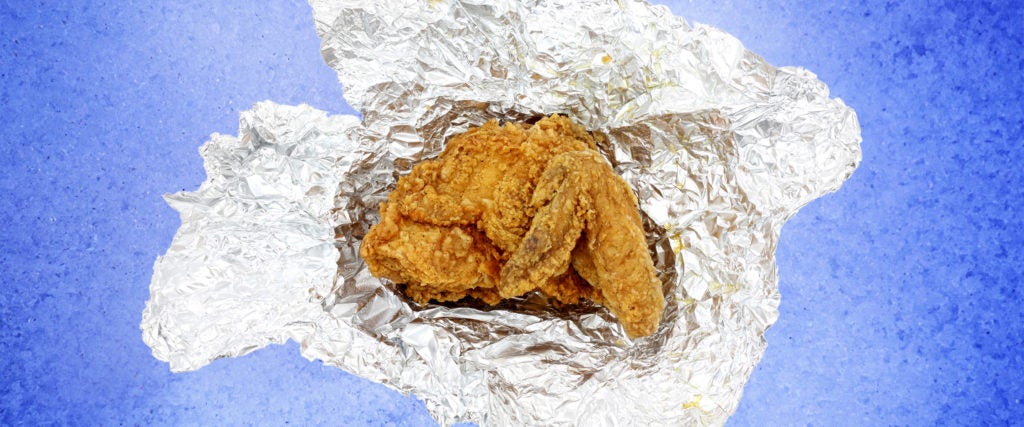If hot fried chicken were a mere seedling, cold fried chicken would be a mighty redwood. To deny that something special happens when a piece of frizzled poultry spends the night in a refrigerator is a brazen denial of the universe and its laws. Compared to hot fried chicken, cold fried chicken is absolute, the king of kings, the prime mover. This is non-negotiable.
The only thing better than fried chicken is cold fried chicken
— Love. Angel. Music. Benji. (@benarmishaw) July 11, 2020
In fact, the evolution that fried chicken undergoes when chilled is backed by science. Rebecca Lang, author of Fried Chicken: Recipes for the Crispy, Crunchy, Comfort-Food Classic, explains that the process of frying chicken creates a crispy shell that seals in both moisture and flavor. “The moisture and goodness is held inside, instead of being allowed to escape,” she says. As the poultry begins to cool down, that shell contracts, during which the top layer separates slightly from the rest. This further prevents it from absorbing moisture from the chicken, which helps the breading maintain its satisfying chomp.
Finally, as steam escapes, the meat inside becomes more dense, resulting in a punchier chicken flavor. “Overnight, any prevalent moisture has evaporated from the fried chicken, which gives us a concentration of flavor by reduction,” chef Jorge Busso explains. “This is a similar occurrence that happens in stews, spaghetti sauces, lasagnas and other things that are often regarded as ‘better’ the next day.”
getting “cancelled” for the truth (saying that leftover cold fried chicken is better than hot fried chicken)
— Casey Taylor (@CTWritePretty) July 15, 2020
Busso also notes that cold fried chicken has been given the opportunity to rest, which allows the flavorful juices time to redistribute. “You’re allowing that muscle tissue to essentially calm down and relax, thus reopening the capillaries for the hot, beautiful juices to go back into their respective places,” he explains. “Let me remind you that salt only dilutes in moisture, so when moisture is evaporated, the salt returns to a solid, less diluted form and is now toward the surface of the skin, rather than inside of the hot oils in the once-hot chicken.” The end result is a tastier bite of chicken.
tw food//
i just had cold fried chicken with ketchup on it and i think it’s the second best thing i’ve ever put in my mouth.
— noah (@iputmysockson) July 14, 2020
On a more logistical level, cold fried chicken is unequivocally easier to eat. “Your mouth might enjoy the burst of hot juices after penetrating the crispy flesh with your front teeth, but have fun sucking air in between each bite as you burn the roof of your mouth and temporarily ruin the sensory pad on your tongue,” Busso emphasizes. “I can’t help but think that on an evolutionary level we’re bound to eating cold foods like our ancestors were.” Busso compares the process of frying chicken, then allowing it to cool to confit, an age-old technique that involves preserving meat in a layer of fat and salt. He adds, “These things were kept in cold cellars and caves for up to a week to be eaten bits at a time and typically only heated once during the initial cooking process.”
Science and logistics aside, put simply, our tongues never lie. “At the end of the day, when you close your eyes and chew, what tastes good is the truth,” Busso says.
And as I mentioned earlier, to deny that cold fried chicken is better than hot fried chicken is a glaring denial of reality.

